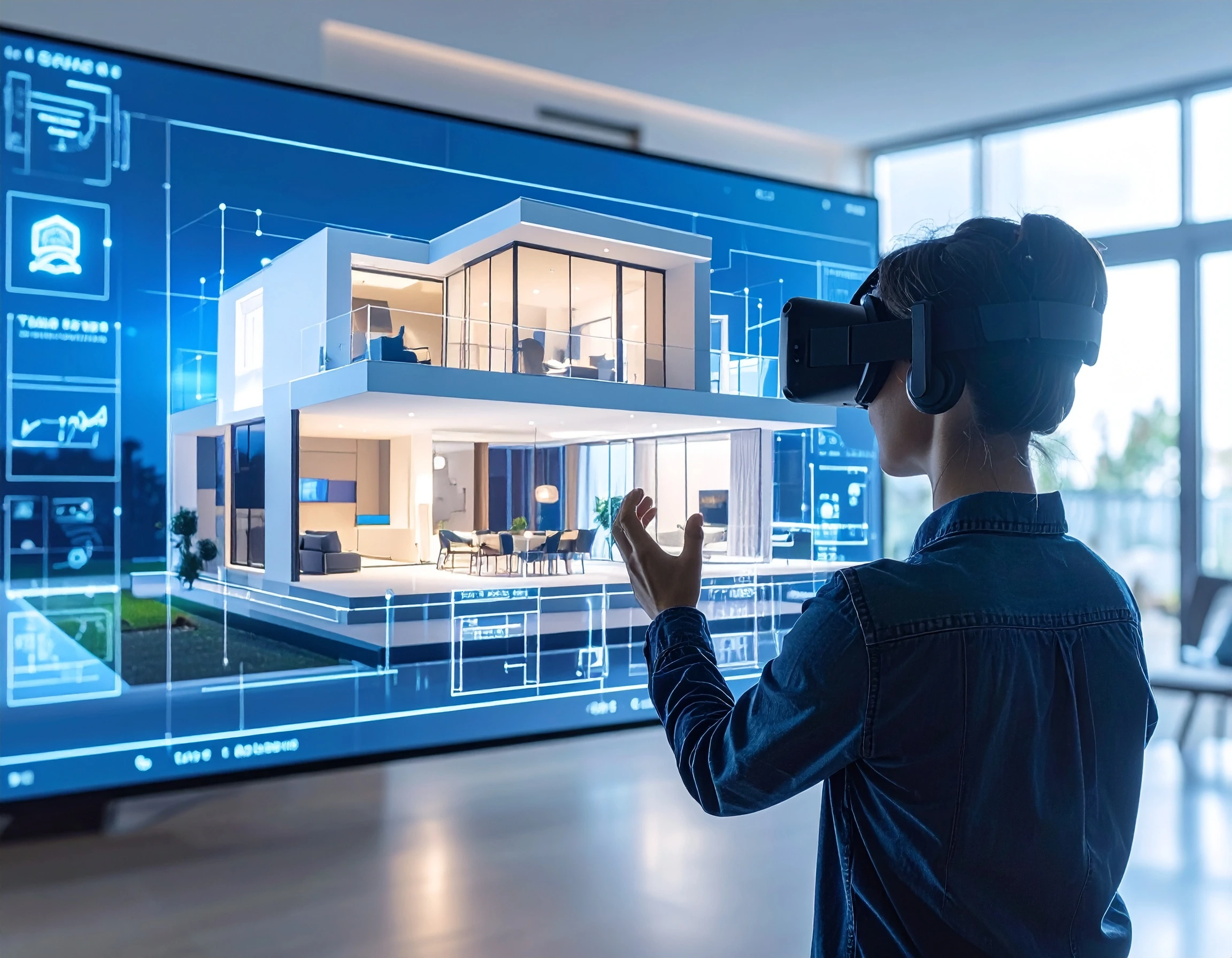AI in Real Estate: Engage Buyers with 3D Virtual Tours and Walkthroughs
The real estate business has grown to the point where site visits and floor plans are no longer the only things that matter. Developers and agents need to come up with new ways to market homes, especially those that are still being built, because buyers are now looking at homes on their phones or laptops. This is where AI in real estate and immersive technologies like 3D virtual tours and virtual walkthroughs come in.
These tools not only make the properties look better, but they also give buyers a sense of control and confidence before the first brick is laid. In this blog, we'll talk about how this change is happening and how it's making things better, from the buyer's experience to the performance of real estate marketing.
What Makes a Virtual Tour Different?
A virtual tour is an interactive experience that lets buyers walk through a space at their own pace. They can rotate the view, zoom in, and look around corners just like they would in person. That's the heart of a 3D experience.
This difference matters because in present times, about 58% of buyers want to see virtual tours when browsing online listings. That's a clear signal that expectations are changing.
How 3D Models and Virtual Walkthroughs Work
A 3D model is a digital representation of a property, created using drone images, LiDAR scans, or photogrammetry. This model is then turned into a virtual walkthrough, where buyers can navigate room by room, understanding flow, light, and layout.
Many platforms now offer a built-in measurement tool. Buyers can use it to check room dimensions, see if their furniture will fit, or even map out decor ideas. It removes the guesswork and builds confidence, especially when the property isn't yet fully built.
AI Behind the Scenes
If you are wondering how is AI used in real estate, here's your answer.
AI in real estate helps personalize the overall experience and automate key tasks like property valuation, lead screening, and marketing support. For example, automated valuation models can analyze photos and listing details to estimate home values with a median error of just 2.4% and that is a major improvement over past methods.
In addition to that, AI is integrated in CRMs and chatbots to sort leads, answer common questions, and personalize follow-ups. It also assists with marketing by scanning listings and user behavior to suggest relevant properties to potential buyers, thus boosting accuracy, speeding up operations, and freeing the agents to focus on building stronger relationships with customers.
5 Ways Real Estate Promoters Use 3D & Immersive Tech to Close Sales
- Letting buyers explore homes, both built and unbuilt, through 3D virtual tours
- Offering finish customization inside the tour (tiles, wall colors, etc.)
- Using AR to highlight key upgrades or package options
- Enabling live measurements with measurement tools
- Sharing virtual walkthroughs via WhatsApp or embedded links
These tactics are especially useful in pre-construction sales, where physical site visits aren't always possible. When buyers can visualize what they're paying for, they make decisions faster and with fewer doubts.
Smarter Marketing Leads to Better Conversions
For developers, this technology is a conversion tool. Properties with virtual tours and 3D experience features tend to attract more serious buyers. This is because they allow people to evaluate details, revisit the space anytime, and reach out when they're ready.
When linked to CRM systems, these tools become a full-scale real estate marketing asset. Every click, pause, and interaction contributes to smarter insights and more effective outreach.
How big is the AI in real estate market?
If you're wondering whether this is just an ongoing trend, well, the numbers suggest otherwise.
The global AI in real estate market is expected to grow from $222.65 billion in 2024 to $303.06 billion in 2025 at a compound annual growth rate (CAGR) of 36.1%.
That's not just growth, but acceleration, and it's being driven by real-world impact, not hype.
Bring Clarity to Every Step of the Buyer Journey
People who are looking for homes today want things to be clear, quick, and under their control. It is easier to show every detail accurately with features like 3D virtual tours, virtual walkthroughs, and AI-powered measurement tools. This means faster sales and better engagement for developers and marketers, especially when it comes to pre-construction sales.
KiXR is a full-featured platform for creating, hosting, and sharing immersive experiences on the web. Get in touch with us to make property journeys that work for you and your buyers.
Kavita has been adept at execution across start-ups since 2004. At KiKsAR Technologies, focusing on creating real life like shopping experiences for apparel and wearable accessories using AI, AR and 3D modeling


